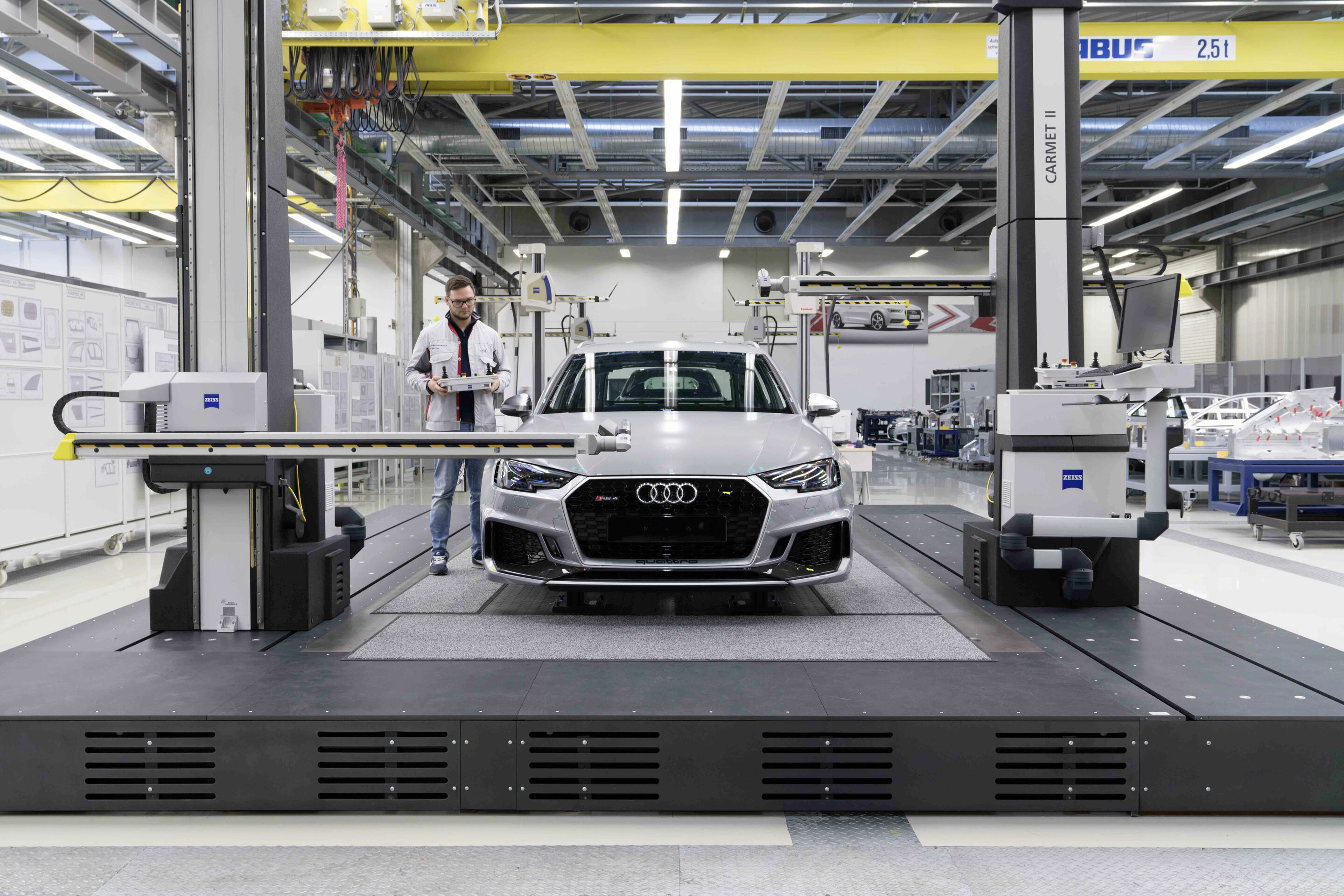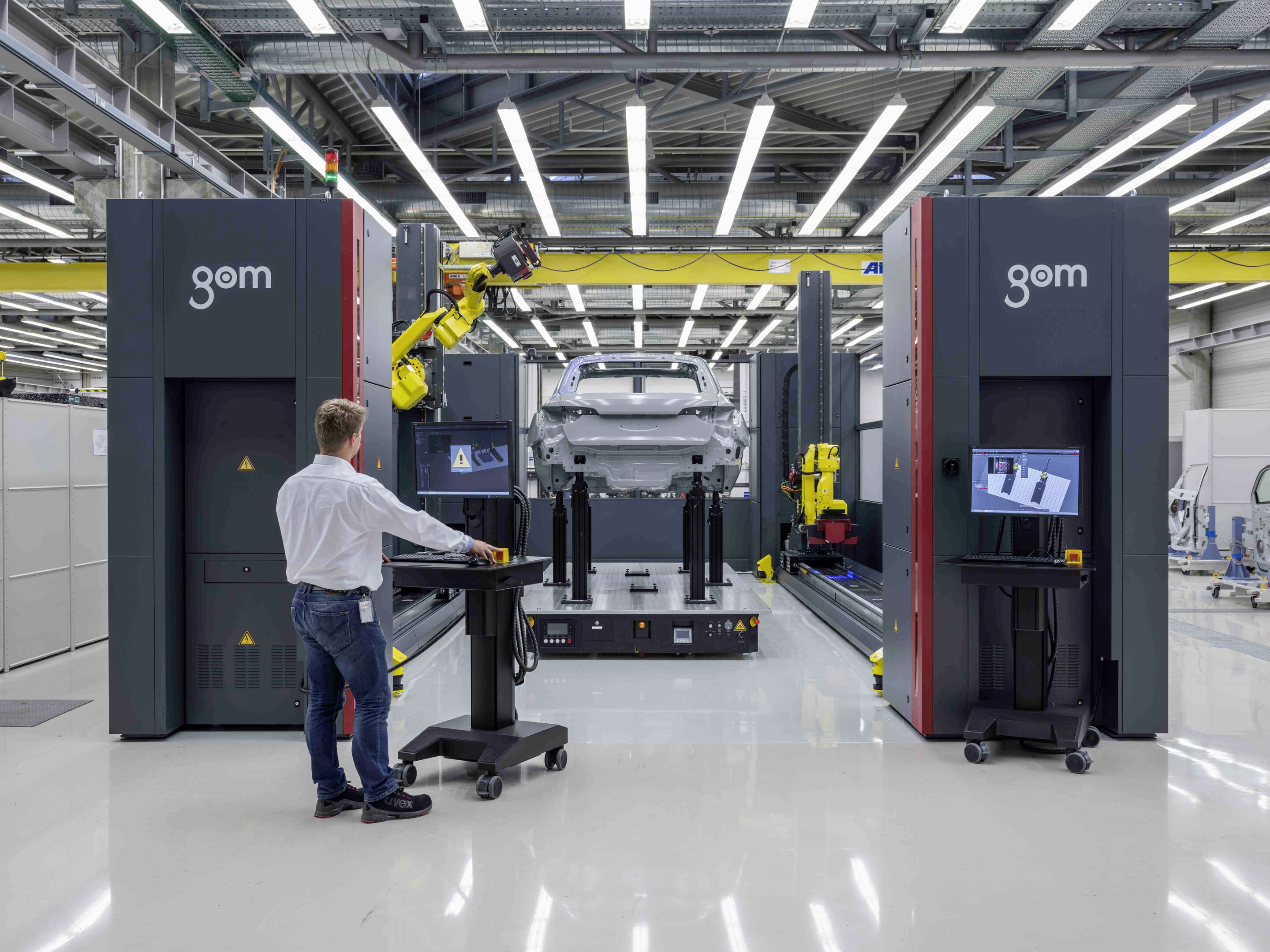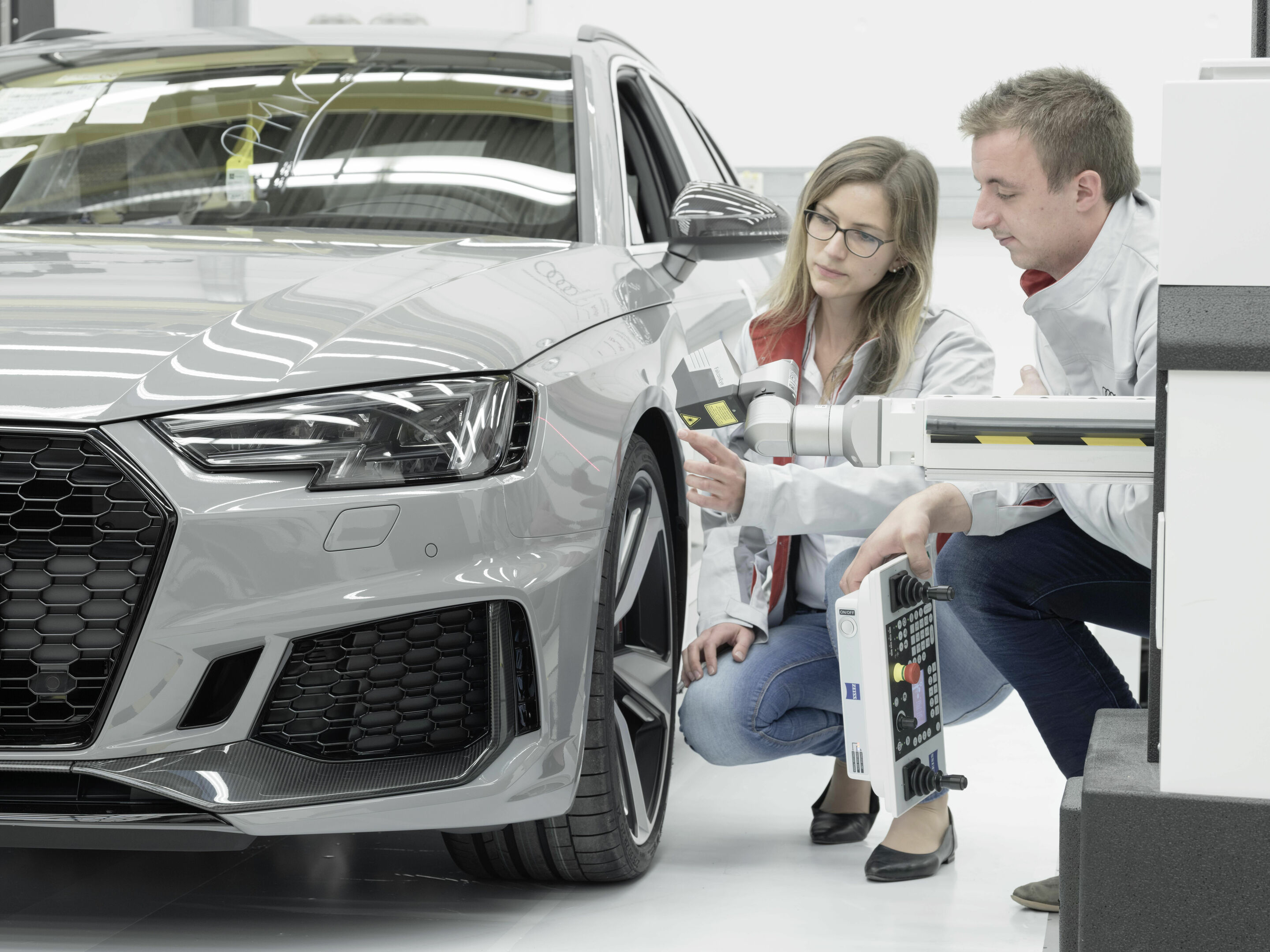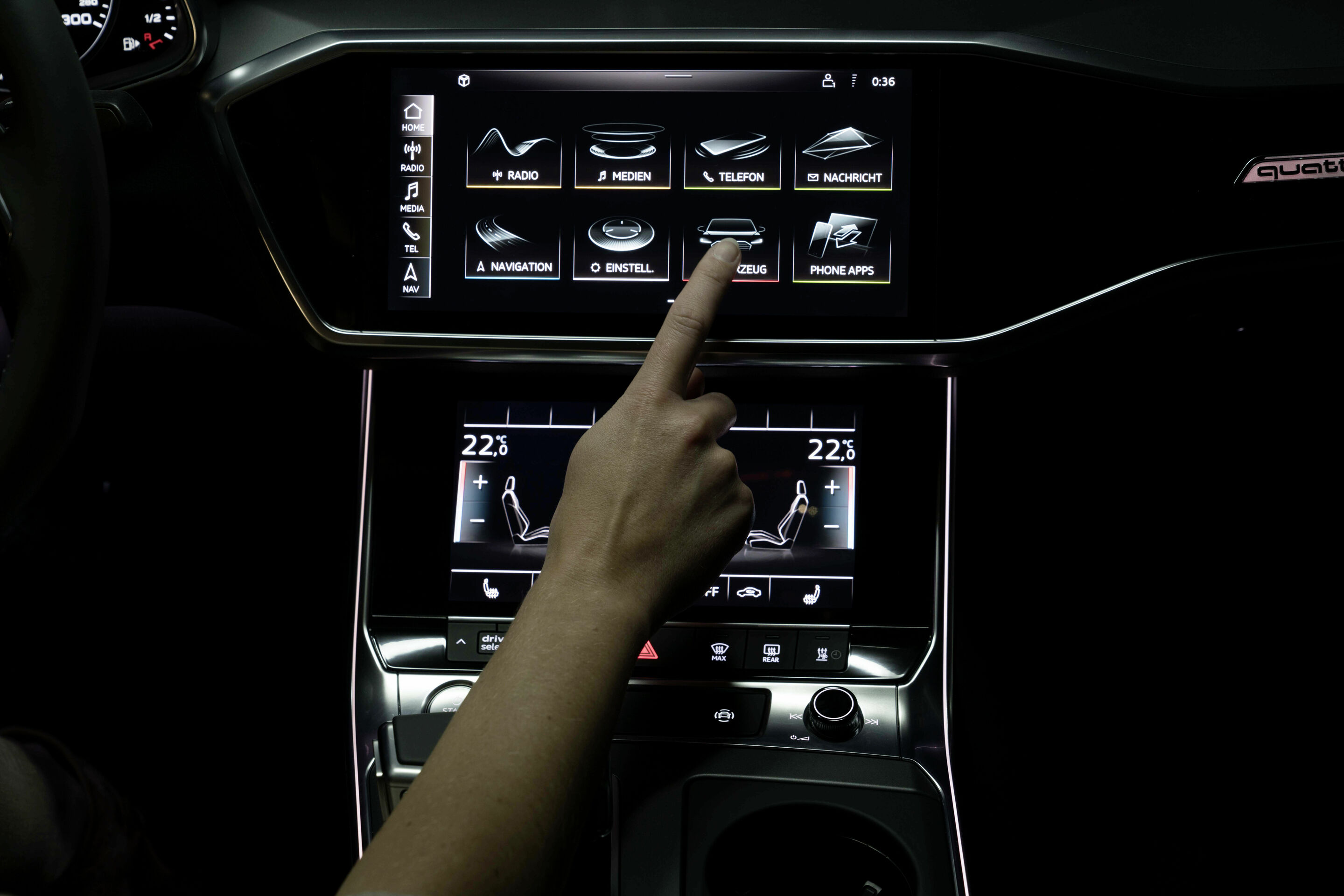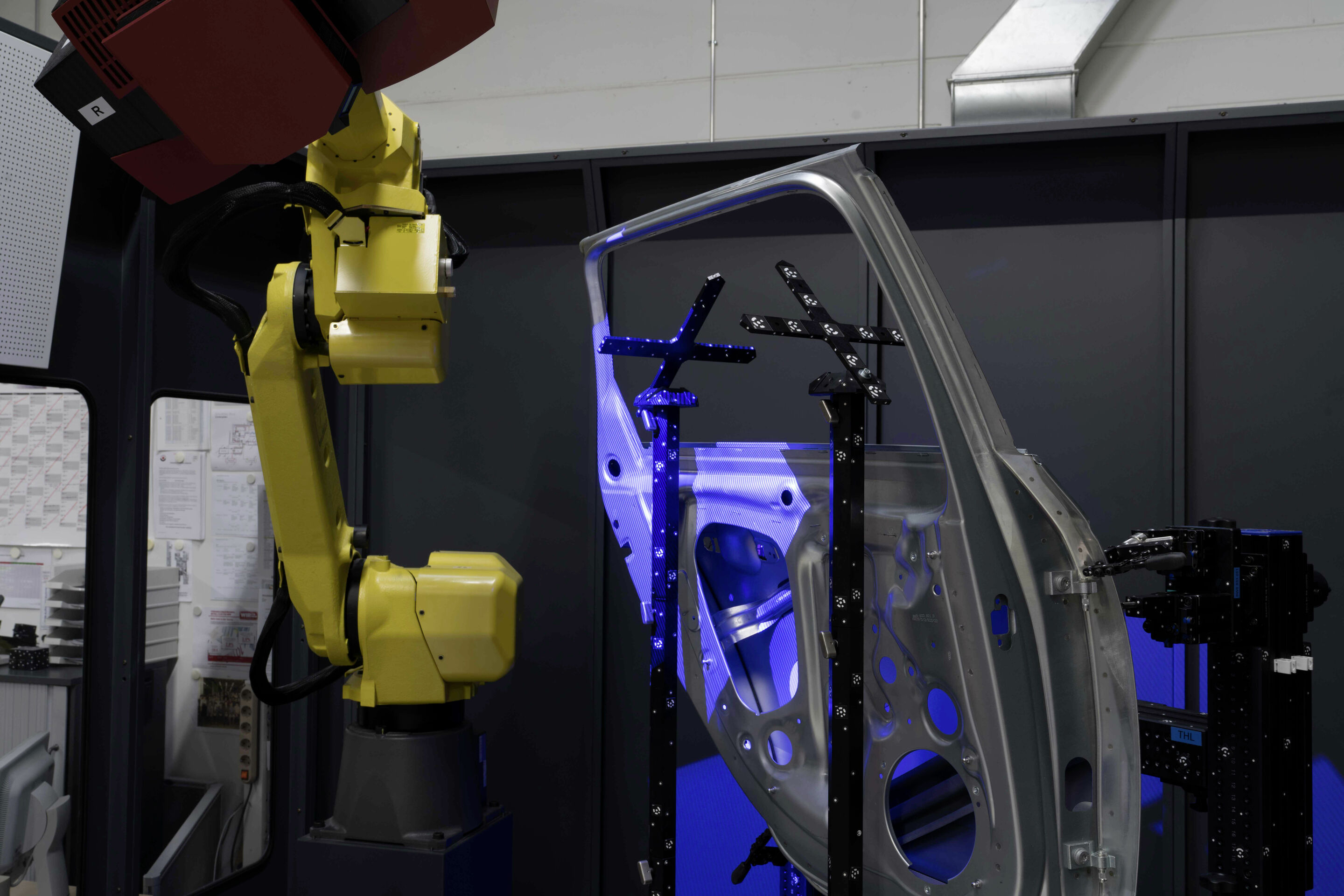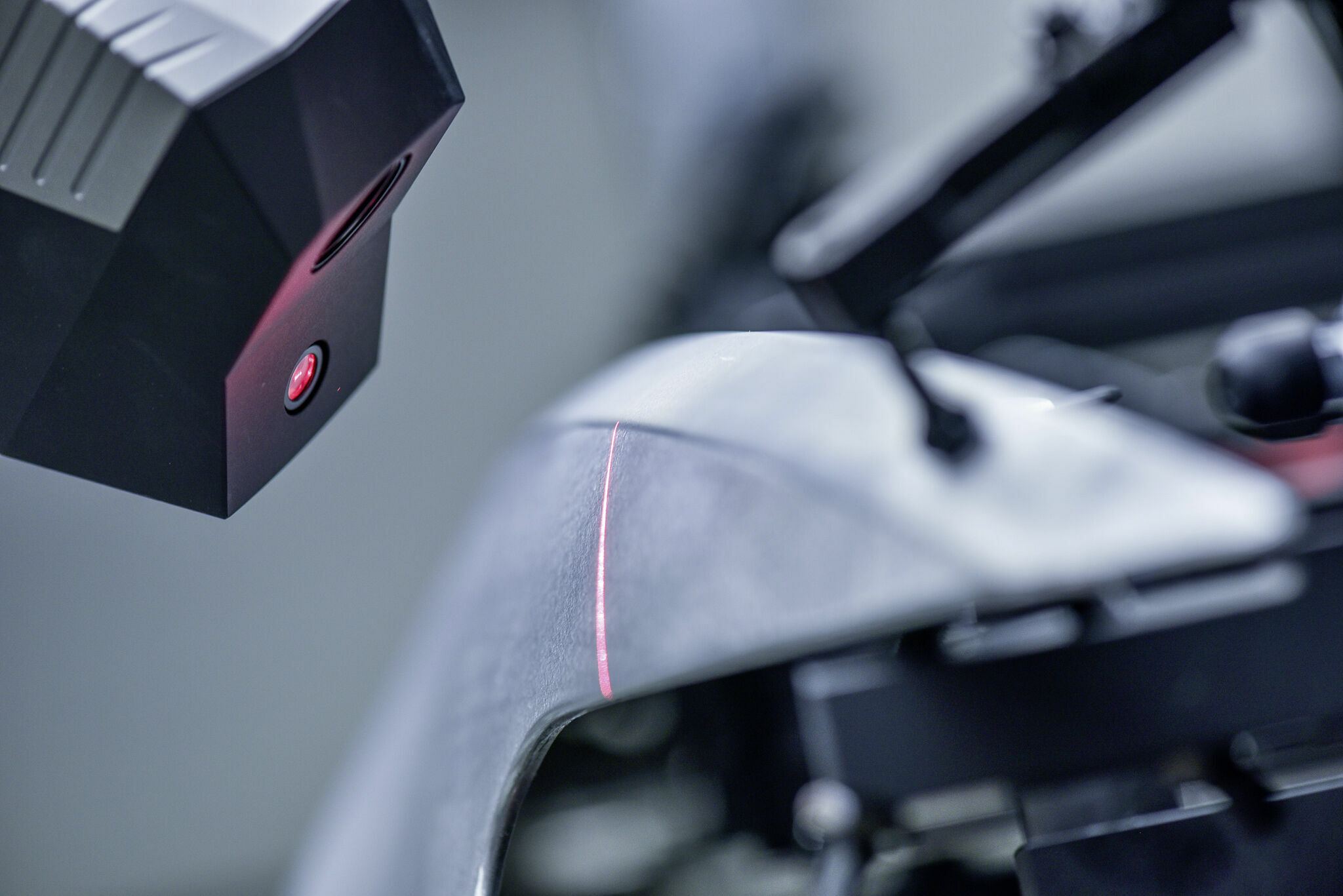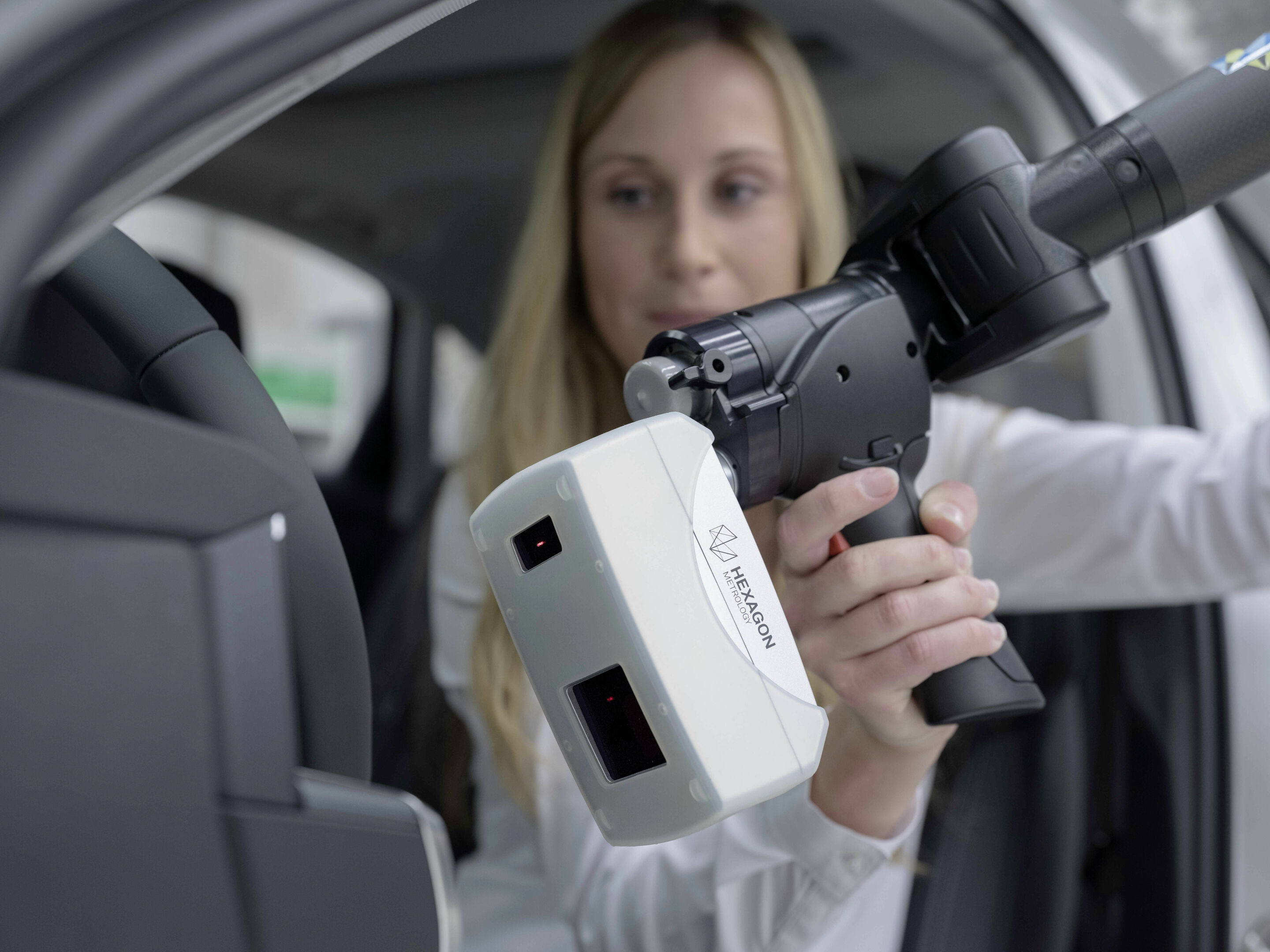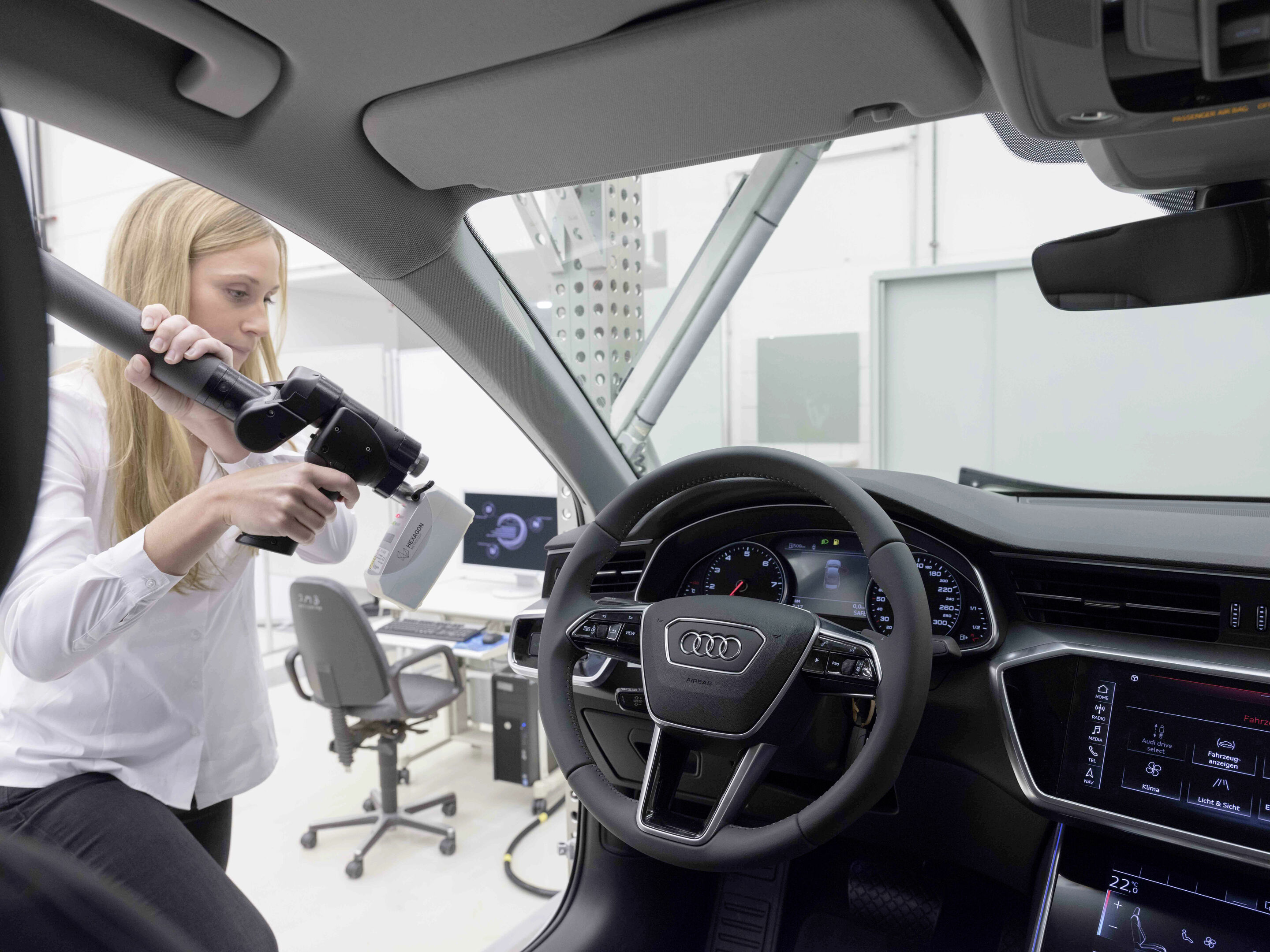Master Jig
Back to overviewEarlier, faster, more connected and more agile: Audi Quality Assurance makes consistent use of digitalization and is bringing the master jig into a new era too. The traditional array of instruments is continually being supplemented by virtual elements. Working with data records starts much earlier in the development process of each Audi today in comparison to previous times. “The so-called digital master jig today allows us to put our expertise into the product creation process up to as many as two and a half years before start of production,” said Marcus Hoffmann, Head of Master Jigs and Measurement Technologies, explaining the work of the quality assurance experts. “Much of what we used to check on physical components ten months before the start of production can now in principle be carried out much earlier on the basis of
3D models.”
New technologies in cars expand and change the face of the tasks which the master jig has to complete. A good example of this is the new Audi A8. Its touch displays with haptic feedback mean that there are much fewer classic controls to be checked. Besides decisions on the fit and feel of components, the daily work of the Quality Assurance experts also includes a variety of functional topics. That’s why Audi has electrified the interior master jig.
The distinction between physical components and digital data records is becoming increasingly blurred, both in terms of the interior master jig and the exterior master jig. Where previously just a manual surface check allowed the desired premium quality to be verified, today photometric cell robots with extremely precise optical sensors can now carry out the required steps. The resulting data records can then be compared with other components at the simple press of a button.
The journey to the virtual master jig has already begun – in the future, complex algorithms should be able to simulate force interactions between components which arise during their assembly and movement.
The basis for this: the traditional exterior and interior master jigs
The exterior master jig enables the assembly of components to be checked and optimized before the start of production. This involves coordinating the fits of all parts that are visible on the exterior with one another. These parts range from sheet metal panels such as doors, engine hoods and tailgates to exterior trim parts such as bumpers, headlights, tail lights, windows, mirrors, door handles, spoilers and trim strips. The experts from Audi Quality Assurance use more than forty measuring systems when working with the master jig. These offer measurements precise to more than 0.1 millimeter.
Other tools are used in this area before work is performed on the exterior master jig. The joints master jig, for example, is used to check for dimensional conformity of the underbody and its individual components, such as the front and rear floors, and to tailor them to one another. This ensures that all components can be assembled together without exerting any tension on one another and in the subsequent assembly process it ensures a high-quality body – a fundamental requirement for the premium feel of every Audi.
Using what are known as exterior function cubes, experts analyze the model’s exterior trim parts in a local zero-reference environment – i.e. in an environment without deviations. Correction data is derived from this process, which is used to optimize components at an early phase. When the parts fit to the cubes, they are added to the exterior master jig for further fine tuning.
Work in the zero-reference environment of the exterior master jig begins around ten months before the start of series production. The employees install the previously inspected panel parts of the body’s exterior skin and their attachments, such as doors, hoods and lids, on a reference body. Exterior trim parts are also installed to the assembly to analyze the interplay of all body parts. This puts the specialists in a position to employ a stepwise method for optimizing the dimensional tolerances of components, achieving flush fits and perfecting the lines of joints.
In an additional fine-tuning step, the experts equip reference bodies in a way similar to that of an exterior master jig. This is done so that the paint application can also be considered in a final detailing step. Although the paint is only about 15 hundredths of a millimeter thick, even this plays an important role in dimensional optimization.
However, the seam pattern of an Audi does not always follow exact mathematics. A sense of proportion is just as important. Take the front bumper, for example, which is slightly offset to the rear at its transition to the fender so that the customer always perceives a harmonious transition when looking at it from above, as is most often the case. Another example is the seams on the tank flap. Here, the upper seam is slightly narrower than the lower one to give
the observer the subjective impression of a better fit.
Along with dimensional conformity, the exterior master jig also yields information on gloss level and the tactile feel of sheet metal, aluminum and polymer parts. In addition, it provides information on the firm seating of all components and their easy assembly. And so the developers recognize whether there is potential for optimization in the component concepts.
No rattling, no rustling and exact fits: Audi places great importance on maximum precision in the interior, too. The interior master jig is a body produced to a specific drawing status or specified size with no deviations at the points where interior components are mounted.
The quality assurance employees tailor the physical components precisely to one another ten months before the start of production. In the process, visual and tactile measurement processes are used.
In addition to the functional criteria (such as freedom of movement of attachments such as doors or tailgate, simple and time-saving installation, tight fit and harmonious actuation forces) the interior master jig also focuses on visual properties. All components are inspected for grooves, sink marks or bumps, as well as for flushness and joint running, for example on the center console and its numerous components. The Quality Assurance interior master jig lends its attention to even the finest of details. Whether minimal burrs on a trim strip or a visually uneven border along the perforation of a speaker cover – every little shortcoming is discussed with the suppliers and corrected in a bid to achieve the desired Audi quality.
The present: digitalization of the master jigs
Advancing digitalization offers totally new possibilities in measurement technologies – it has brought the work of the master jig up to a new level in the past years. For many of these new tasks, optical measurement cells form the technological basis. They allow automated and objective analysis of the surface quality of sheet metal and trim elements.
The latest addition to the master jigs, a photometric measurement cell the size of a double garage, represents an important step in the direction of the virtual master jig. Two robots with eight-axis kinematics and high-resolution optical sensors (16 megapixels) simultaneously capture the geometry and the surfaces of the bodywork. The length of time required to fully digitize an entire body thus decreases from 48 hours to a mere four.
An advantage of optical versus tactile measurement techniques is that, among other things, they can be done without touching the material. This allows even soft materials such as seals and seats to be precisely measured. What’s more, it doesn’t just measure individual points, rather it precisely measures the entire surface area. Data obtained through the photometric measurement cell serves as an important basis for further work steps on the master jig.
Virtual joining
The combining of available CAD data already takes place in the master jig at a very early stage of the product creation phase. So-called virtual joining also allows CAD data of the first individual components to be compared against the digitized measurement data. A further use case: two data records from completely digitized components can be collated in order to check the quality of the components and, if necessary, further optimize them.
Example: the fuel filler flap of the new Audi RS 4 Avant (combined fuel consumption in l/100 km: 8.8*; combined CO2 emissions in g/km: 200 - 199*) is able to be demonstrate its various possibilities using virtual joining. In an early development phase, the bodywork component is only available as a CAD data record and is merged virtually with the digital measurement data of the physically available tank flap by means of a piece of software. Using interactive analysis of the facing surface curves as well as the outline and radius geometries, the Quality Assurance staff can identify the need for corrections much faster than before – and long before cars are assembled.
Digital reference samples
Components from the series production of a car must correspond to the qualification status of the master jig. So-called reference samples are stored for the life cycle of a model and beyond, and are available for comparison at any time.
For several years now, Audi has been increasing its use of digital reference samples in addition to these physical reference samples. These 3D data records documented at the end of component qualification serve as a reference, just like the previous physical reference samples. They represent a possibility for comparison, both in the suppliers’ series production processes and in Audi’s own production processes. Digital reference samples ensure fast availability as well as international compatibility and interchangeability between Audi sites worldwide. Contrary to components stored, they are not subject to change over a long period of time. In addition, space and shelves for the storage of physical parts are increasingly being eliminated – an efficiency gain that also benefits sustainability.
Electrification: functional interior master jig
Audi is taking its high quality standards into the digital age with a new operating concept. The number of conventional switches on the instrument panel will decrease drastically in the future. On the current Audi A4, there are still 22, but in the next generation of the Audi A6 which celebrates its premiere in 2018, there will only be a few of them left. This poses new challenges for Quality Assurance. The focus used to be on the haptic and acoustic coordination of knobs. Now everything revolves around the function of the electronic controls in black-panel look.
To be able to fully evaluate digital controls and virtual processes, Audi electrified the interior master jig and thus created the functional interior master jig. All functions of a new interior with the latest parts can be modeled. The behavior of the electrical control elements when installed can thus be checked at an early stage of a new model’s development.
The functional interior master jig will be used for the first time as part of the development of the new Audi A6 and is equipped with the original cable harness of the model. This enables all interior functions of a new Audi model to be simulated – be it electrically powered windows, seat adjustment settings, ambient lighting, head-up display, Audi virtual cockpit or touch-sensitive screens.
The combination of acoustic and haptic feedback as well as familiar touch gestures such as swiping like on a smartphone allow particularly safe, intuitive and rapid operation. When the driver activates a function on one of the touch-sensitive screens or via one of the new glass-look buttons, he/she hears and feels a click as confirmation. The functional interior master jig can be used to check not only the new control elements, but also to fine-tune the digital representation and the accuracy of the graphical user interface.
During function tuning, the Audi Quality Assurance system also monitors the fit and gaps around the black panel control elements. Some joints in the interior today fulfill more than merely an aesthetic function. They serve, for example, to allow for expansion of the touch-sensitive displays in relation to the decorative trim elements in the case of extremes of temperature.
The ambient lighting in many Audi models strongly influences the perception of the entire interior. Therefore, the functional interior master jig also assesses scatter and leakage light – i.e. light escaping at undesirable places – as well as possible reflections. The aim is perfect interaction of the light guides with the geometry of the interior, both in daylight and at night.
The future: the virtual master jig
Tactile and optical measurements today already provide exact data records for individual components which can be compared with one another at any point by means of virtual joining. In the future, Audi will also convert various exerted forces, e.g. when opening and closing the hood, into digital data records and then use them for complex simulations. Soft seals, deformations caused by various force interactions during movement – in the future, there will be very complex algorithms which can then be made available for real-time analyses by powerful computers at the push of a button. We will continue on our journey into the future – Audi Quality Assurance is on the way to the virtual master jig.
* Figures depend on the tire/wheel set used
Subject to change without notice; errors and omissions excepted.
